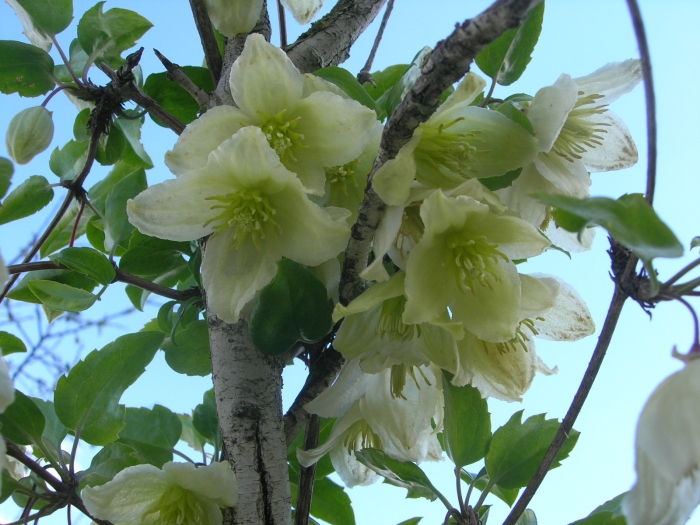Winter Flowering Clematis
(Clematis cirrhosa)
Winter Flowering Clematis (Clematis cirrhosa)
/
/

Ram Eisenberg
CC BY-SA 3.0

















































Estimated Native Range
Summary
Winter Flowering Clematis is valued for its winter blooms and versatility in the landscape. It can be used to cover walls, trellises, and arbors, or allowed to scramble over shrubs and trees, adding vertical interest to the garden. It requires well-drained soil and can tolerate a range of light conditions from full sun to part shade, though it prefers a sheltered position to protect its delicate flowers from harsh winter winds. While generally easy to maintain, it can be susceptible to Clematis wilt, a fungal disease that causes sudden wilting and death of stems. To minimize the risk, plant the base of the vine in a cool, shaded spot and ensure good air circulation. Pruning is usually not necessary, but if desired, it should be done immediately after flowering to maintain shape and size.CC BY-SA 4.0
Plant Description
- Plant Type: Vine
- Height: 10-15 feet
- Width: 10-15 feet
- Growth Rate: Moderate
- Flower Color: Cream, White
- Flowering Season: Spring, Winter
- Leaf Retention: Evergreen
Growth Requirements
- Sun: Part Shade, Full Sun
- Water: Medium
- Drainage: Medium
Common Uses
Bee Garden, Bird Garden, Butterfly Garden, Deer Resistant, Drought Tolerant, Fragrant, Hummingbird Garden, Low Maintenance, Potted Plant, Rabbit Resistant, Showy Flowers
Natural Habitat
Native to the Mediterranean region, including parts of North Africa and the Middle East
Other Names
Common Names: Early Virgin’s-Bower, Fern-Leaved Clematis, Evergreen Clematis, Evergreen Traveller’s Joy, Dionysosklematis, Ranken-Waldrebe
Scientific Names: , Clematis cirrhosa, Clematis balearica, Clematis cirrhosa var. balearica, Clematis cirrhosa subsp. balearica, Clematis polymorpha, Clematis semitriloba, Clematis cirrhosa var. semitriloba, Clematis cirrhosa subsp. semitriloba, Clematis calycina
GBIF Accepted Name: Clematis cirrhosa L.